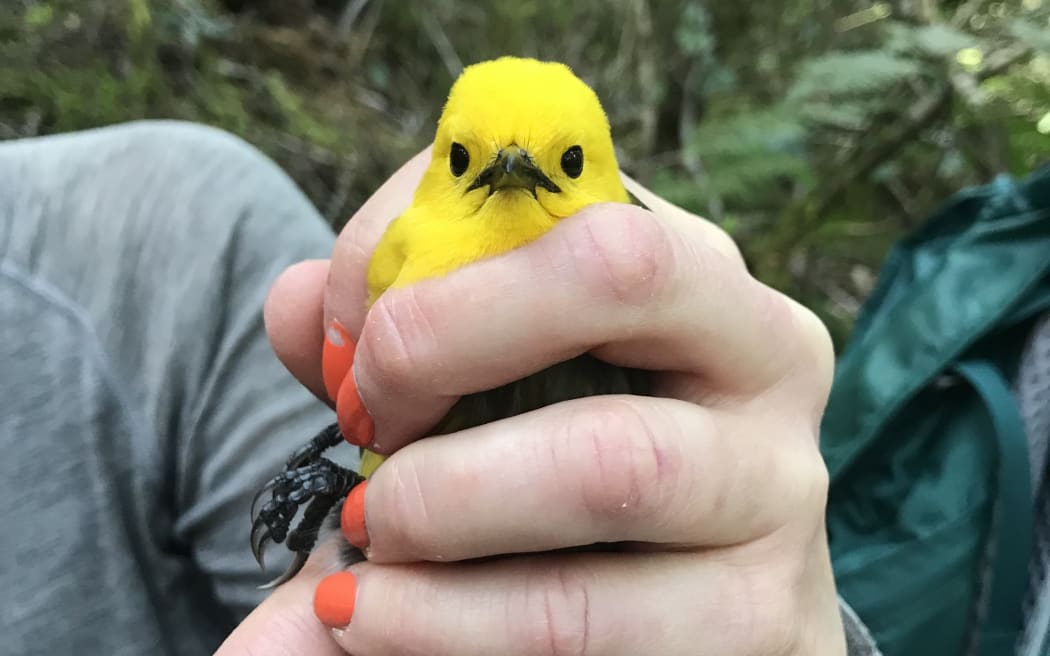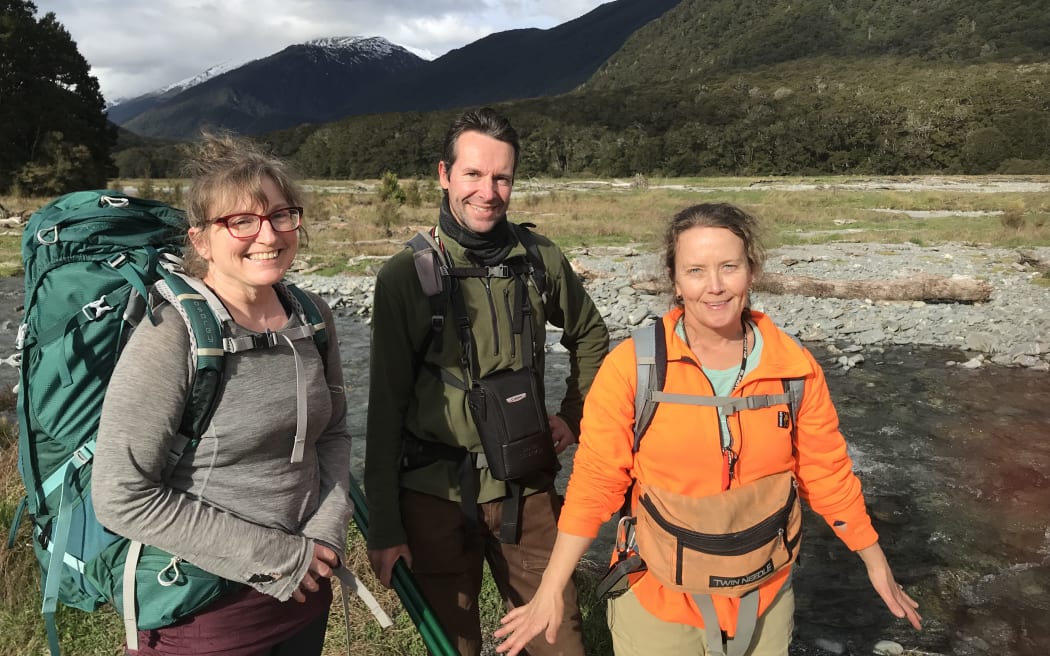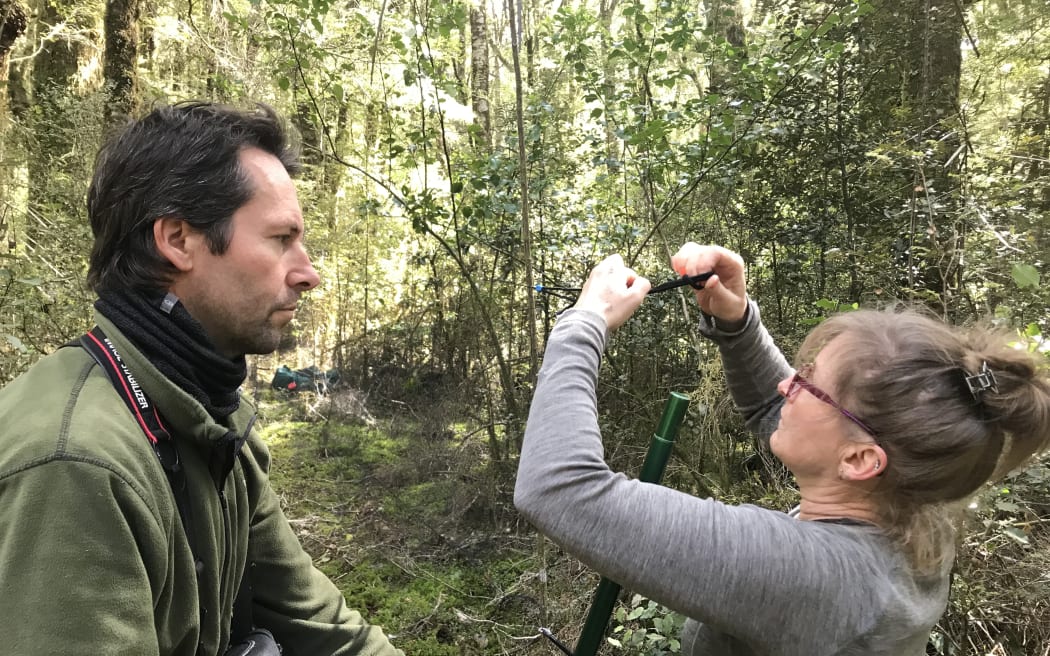In the 1800s, mohua were one of the most abundant of the forest birds, found in different forest types. Their bright yellow heads (hence their common English name, yellowhead) and yellow-feathered bellies led them to being dubbed the ‘bush canary’ by European settlers.

Mohua. Photo: Claire Concannon / RNZ
Follow Our Changing World on Apple Podcasts, Spotify, Stitcher, iHeartRADIO, Google Podcasts, RadioPublic or wherever you listen to your podcasts
But – and you know this story – forest clearance and introduced predators reduced their population and range significantly. These little songbird insectivores nest in holes in trees, and so are vulnerable to stoats and ship rats. Some mohua have been transferred to predator-free offshore islands where they are doing well, but on mainland New Zealand there remains just a few small, scattered populations living in South Island beech forest.
One of these can be found just north of Makarora, near Cameron Flat, in the silver beech forest that lines the west side of the Makarora River as it runs alongside State Highway 6 through the Haast Pass. Keeping an eye out for this little population is a Central Otago Lakes Branch of Forest & Bird volunteer team, and conservationists from the Southern Lakes Sanctuary.

Laura Molles, Grant Maslowski and Jo Tilson. Photo: Claire Concannon / RNZ
Cryptic in the canopy
Despite their flashy yellow colour, and loud song, these birds are difficult to count. They spend most of their time high in the canopy, where they often fly with their cousins, pōpokotea whiteheads, and pīpipi brown creepers.
To properly monitor them, this year the Southern Lakes Sanctuary is catching and banding all the birds they can.
Plus, they are collaborating with Atarau Sanctuary, who are developing a new monitoring tool using machine learning to identify individual birds from acoustic recordings. To train the algorithm, Dr Laura Molles says, you must first provide it with labelled data, which is why she is spending her time following banded mohua through the forest with recording equipment to capture their song.
The promise is a non-invasive monitoring tool that could let you know not just species presence and absence, but numbers and movements of individual birds.

Grant Maslowski and Laura Molles set up the mist net. Photo: Claire Concannon / RNZ
To learn more:
-
Listen to the full episode on Our Changing World.


